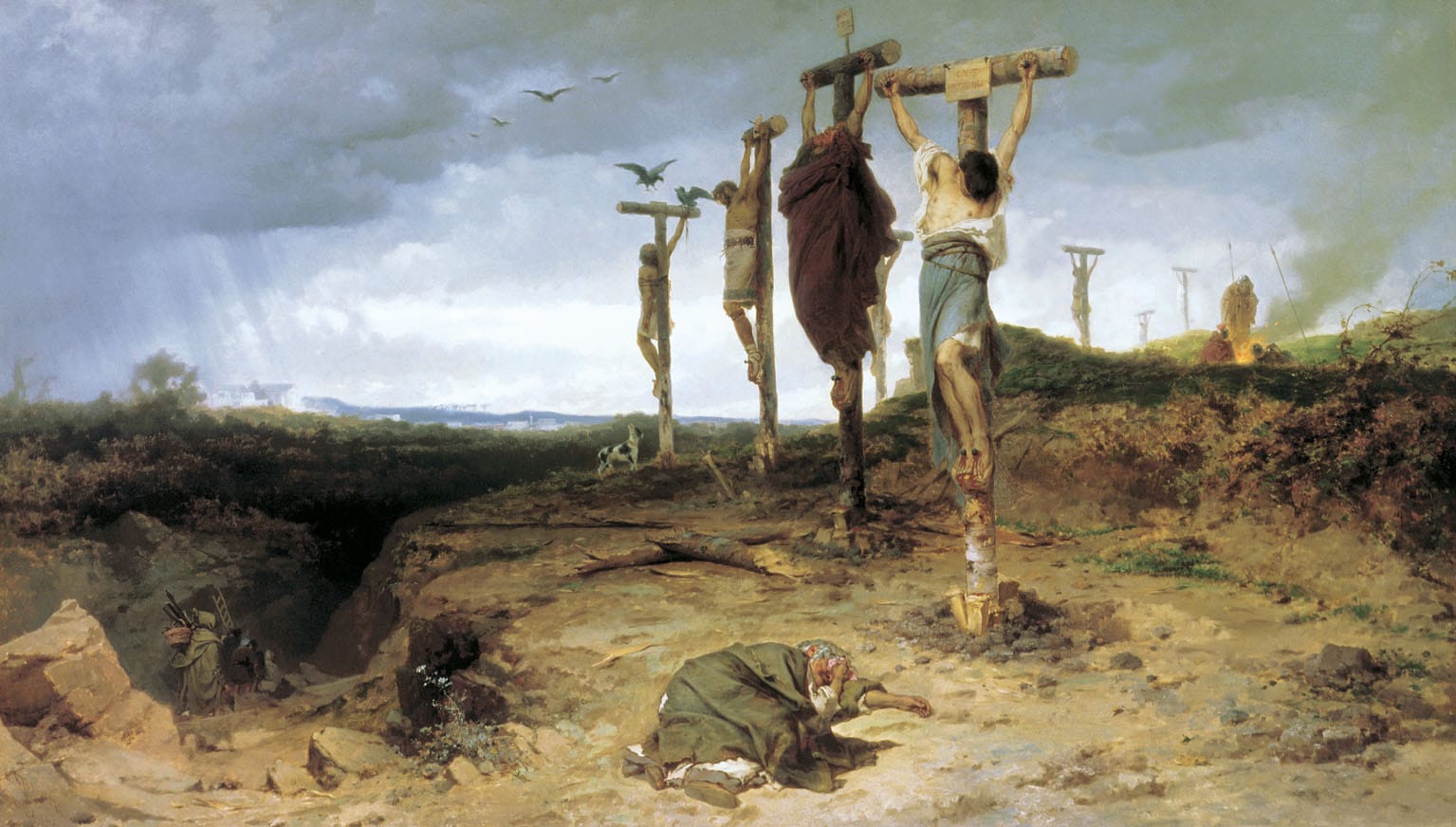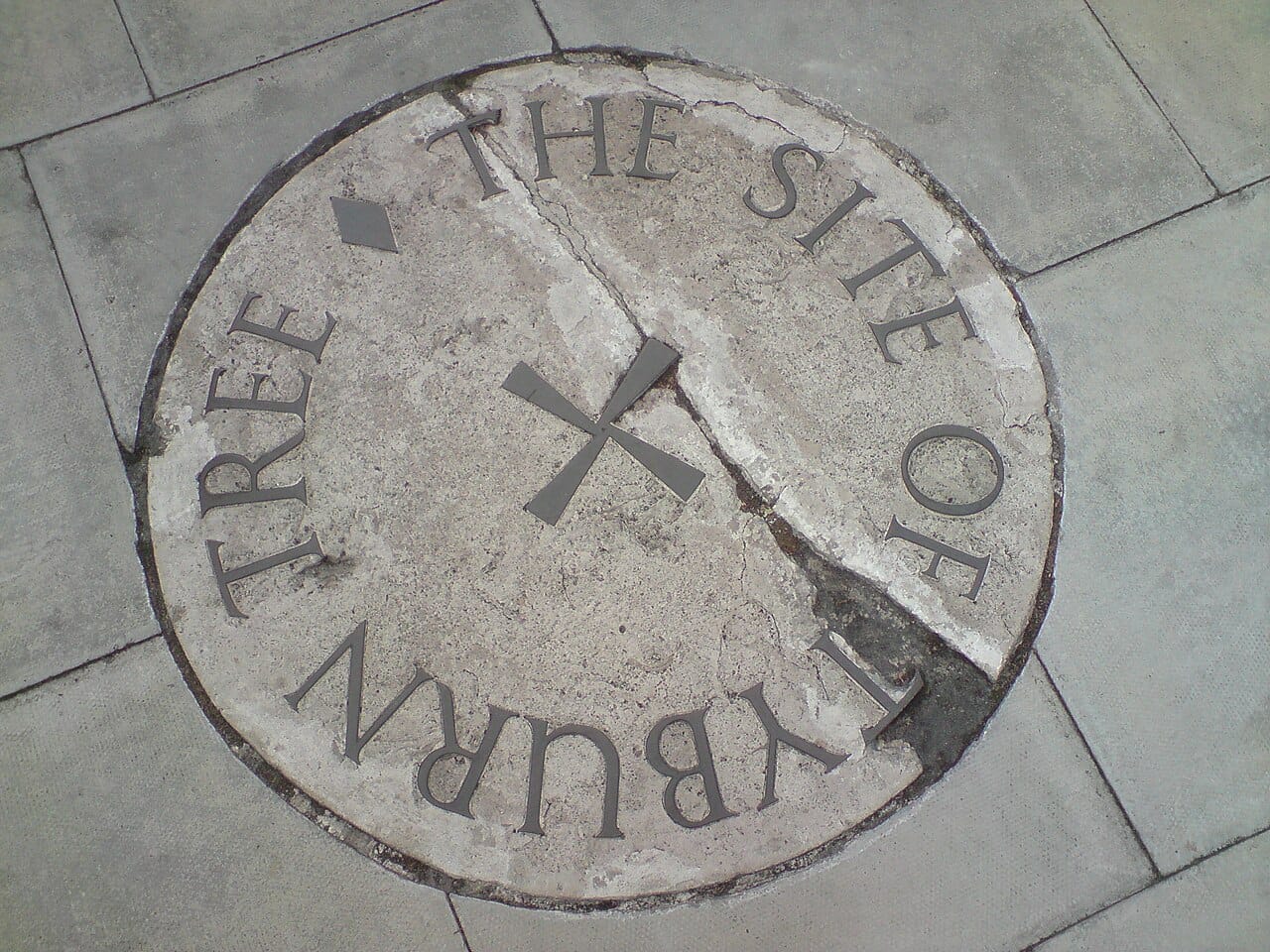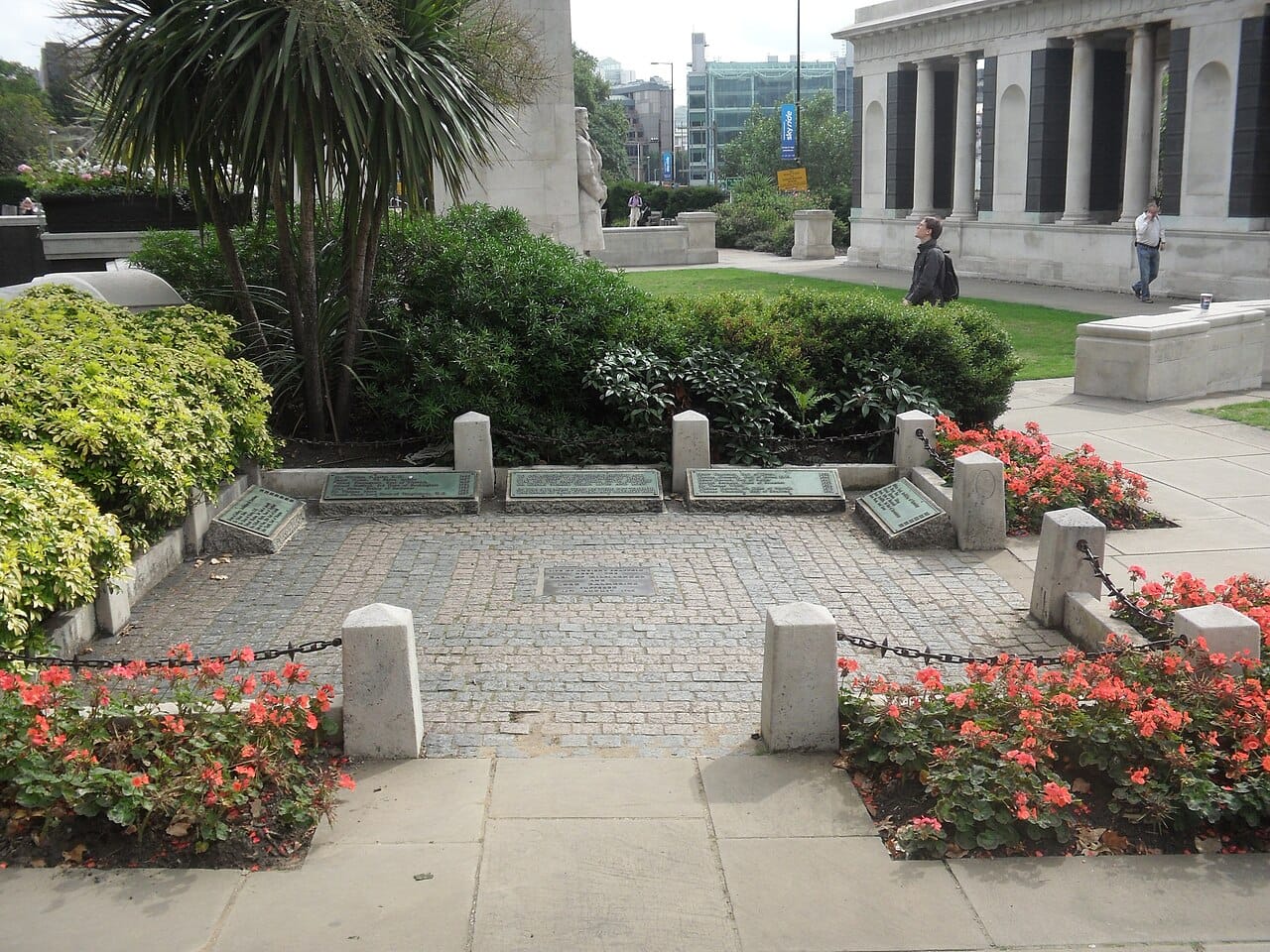Do Places of Execution have Ghosts?

Today, it is hard to imagine any ghosts hanging around Tyburn, but for centuries, this spot by Marble Arch is where London executed more than 50,000 people. These were public executions. The last man to be hanged there was a highwayman, in 1783. But, all you can see today is this stone.

The stone is at the location below, across the street from Hyde Park, and visible under the tree. There are no ghosts these days, although Oliver Cromwell's ghost is said to have been there in the past.

Aristocratic executions took place at the Tower of London and on nearby Tower Hill for centuries, with the last public execution in 1747. This unspectacular memorial on what is now Trinity Square and Gardens marks the spot. It is said that the ghost of Anne Boleyn haunts the church inside the Tower and there are probably some other ghosts hanging around.

The last public execution in England was in 1868, when Irish nationalist (Fenian) Michael Barrett was executed at Newgate Prison for the Clerkenwell bombing. After that, executions moved indoors and out of sight.
In Paris, there seem to be fewer ghosts because the execution sites have been effaced. During the Revolution, the site of the guillotine was toward the northern end of Place de la Concorde, where thousands could view it. This is what it may have looked like in 1793, when Louis XVI, Marie Antoinette, Robespierre, Danton, Madame du Barry, Antoine Lavoisier, Charlotte Corday and over a thousand others were executed here. The view from Britain here.

Where was this? The guillotine was by today's City of Brest statue (on the left, below), which was produced in 1836 by Jean-Pierre Cortot. It is one of eight city statues. No memorial; no ghosts.

In earlier times, French kings executed people at the Gibbet of Montfaucon, outside the city limits but now in the 19th arrondissement. Bodies were left to rot as a warning to the populace, and ghosts were often seen hovering around them. This is a detail from the Grandes Chronicles de France, by Jean Fouquet, about 1460:

The last public guillotining in France was of Eugen Weidmann, who was convicted of six murders and beheaded in 1939.
In Milan, the Piazzale Loreto today is a busy nondescript intersection but, in April 1945, Benito Mussolini, his mistress Claretta Petacci and three others were hanged there for public display. They were already dead though, shot by partisans up by Lake Como. Mussolini is the second from the left in this photo. No ghosts here.

Finally, in the United States, the last state to stop public executions was Kentucky. This photo shows the hanging of Rainey Bethea, a young Black man, in Owensboro in 1936. It was a bit of a fiasco and as a consequence he was the last person publicly executed in the United States.

No one knows where Golgotha is; it might now be a parking lot. It is evoked in the Russian painting up top. There do not seem to be ghosts in Rouen, where Joan of Arc was burned at the stake, nor in Florence where Savonarola was burned at the stake, nor at Vincennes, where Mata Hari was shot by firing squad.
